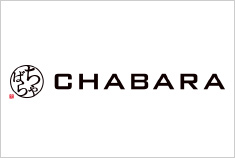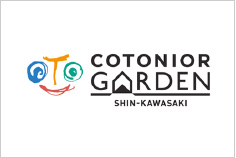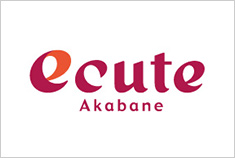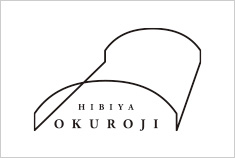Translation
The official homepage will be translated in English, Chinese, Korean using a private automatic translation service.
Please note that as it is a machine translation from an automatic translation system, the translation may not always be accurate.
Also note that after the translation, the content may not be same as in the original Japanese page.
-

2k540
With a central theme of “Japanese monozukuri” (Japanese product making), this is a “street” which promotes new living styles in a row of stores that combine sales shops and craft studios. Including leather goods, jewelry, umbrellas, glasses, shoes, and more, the many different products feature warm and innovative designs that are only available here and that are individually and painstakingly created in the shops by richly original Japanese craftspeople. At some of the shops, you can try your own hand at product making. 2k540 is within walking distance of Akihabara.
-

‐Ryogoku‐ Edo NOREN
200 years ago, Edo was one of the biggest cities in the world. Now, a street where you can enjoy the Japanese food beloved by the people of Edo has opened in Ryogoku, a district famous for its connection with the Japanese national sport of sumo. The people of Edo used to flock to Ryogoku, which is also the birthplace of Edo-style sushi. Edo NOREN brings together 12 shops specializing in food such as traditional Edo-style sushi, the authentic chanko-nabe stew eaten by sumo wrestlers, soba (buckwheat noodles), and tempura! But it's not just about food. Many Edo-related events are also held here. Edo NOREN can be accessed directly via the JR Ryogoku Station West Exit.
-

Chabara
This market gathers and sells in one location fine food products carefully selected from across Japan. There are over 6,000 items,such as soy sauce, characteristic condiments and natural honey, that could normally only be obtained in their own local areas! Without setting foot out of Tokyo, you will feel that you are traveling throughout Japan at this food theme park where you can experience the depth and tradition of Japanese food culture. Chabara is next to JR Akihabara Station.
-

COTONIOR GARDEN Shin-Kawasaki
This is a complex designed around the theme of multi-generational interaction. It consists of shops, rental housing, a nursing home, a nursery school, and a plaza. The plaza contains areas such as a lawn, a small outdoor stage and a playground. As a local hub, it will hold various events where people from different generations can mingle.
-

Shapo
These are shopping centers directly connected to stations on the JR Sobu Line, which links Tokyo with Narita Airport. Included are restaurants, fashion shops, drugstores, and general merchandise stores as well as food stores offering groceries, deli items, sweets, and other seasonally appropriate selections indispensable in everyday life. They are convenient for shopping and meals.
-

Beans
These are 12 shopping centers directly connected to JR Line stations in Tokyo, Kanagawa, and Saitama. Included are restaurants, drugstores, and general merchandise stores as well as food stores offering groceries, deli items, sweets, and other seasonally appropriate selections indispensable in everyday life. They are convenient for shopping and meals.
-

ecute Akabane
This is a shopping center in Akabane Station, which is only about 15 minutes on the JR lines from Tokyo Station, Akihabara and Shinjuku without changing trains. Inside is a bar where Tokyo ji-zake (local sake) from a nearby brewery, the only sake brewery in the Tokyo metropolitan area, is served with authentic Japanese cuisine. You’ll also find a wide range of shops from food stores offering deli items and sweets to cafés and general stores. It’s a handy place to stop off for shopping or a quick meal without leaving the station.
-

SEEKBASE AKI-OKA MANUFACTURE
Beneath the elevated railway tracks between JR Akihabara and Okachimachi Stations, new discoveries and great buys await in countless shops specializing in all kinds of goods, foods and everything in between—from audio equipment and cameras to hobby supplies! There’s even a craft gin distillery and a cutting edge sustainability-focused luxury hotel. Welcome to SEEKBASE, a new center for technology and one-of-a-kind specialties that will thrill and inspire.
-

Hibiya OKUROJI
Hibiya OKUROJI will open for business in late June, 2020 in the 300-meter space beneath the distinctive 100 year-old brick arches of the viaduct between JR Yūrakuchō and Shimbashi station. It contains a wide range of distinctive shops: various types of bars, such as ones with standing rooms only or an authentic downtown Tokyo atmosphere; restaurants that specialize in particular ingredients such as lamb, shellfish or somen noodles, or cooking styles such as charcoal-grilled, wood-grilled or halal; boutiques selling fashionable jackets, ties or leather footwear; outdoor gear stores; shops that will brighten your life with utensils, dyed products and leather items crafted by artisans; and confectioners selling beautiful, delicious sweets.
-

alːku Asagaya
We have held various events and developed facilities beneath the elevated train tracks between Asagaya and Kōenji stations on the JR Chūō-Sōbu Line with the aim of uniting the local community. We have now opened alːku Asagaya, a new community space with a focus on ‘food’ and ‘learning’ that young families will appreciate. alːku Asagaya has spaces where kids and their parents can enjoy learning experiences, and is lined with specialty stores, such as cafes that are making their Tokyo debut. The name ‘alːku’ is built from the first letters of Asagaya, Kōenji, location/life, and united. It is pronounced like the Japanese word for ‘walk’ (‘aruku’), and incorporates our wish that visitors will enjoy a leisurely stroll around it. The naming also expresses our wish to move forward into the future with the people who live in the area between Asagaya and Kōenji.